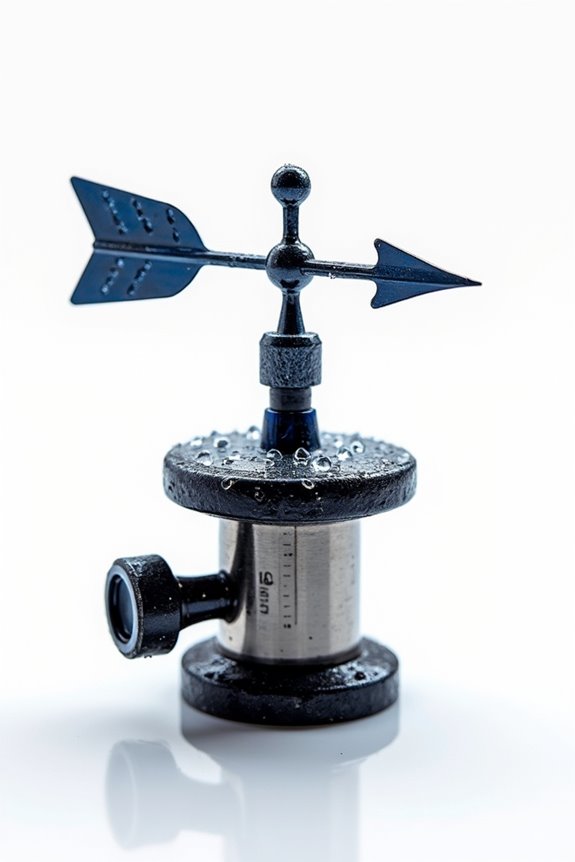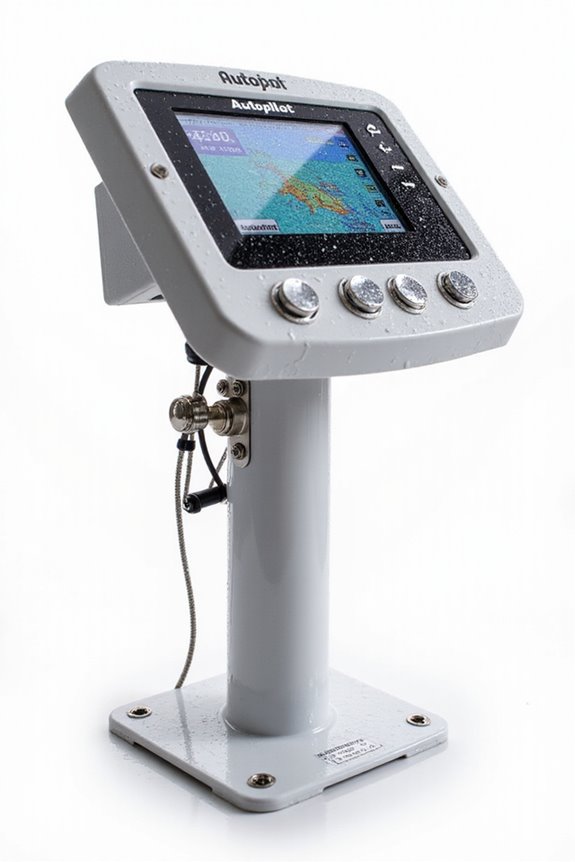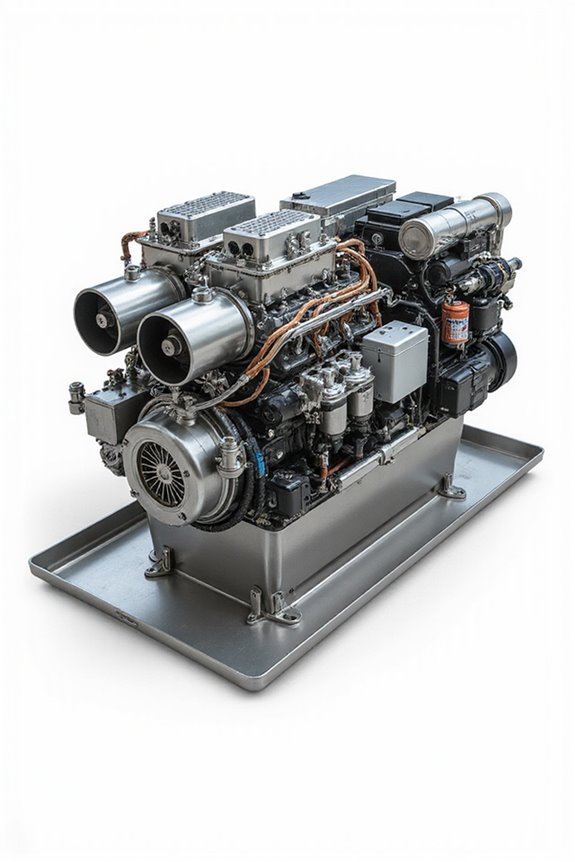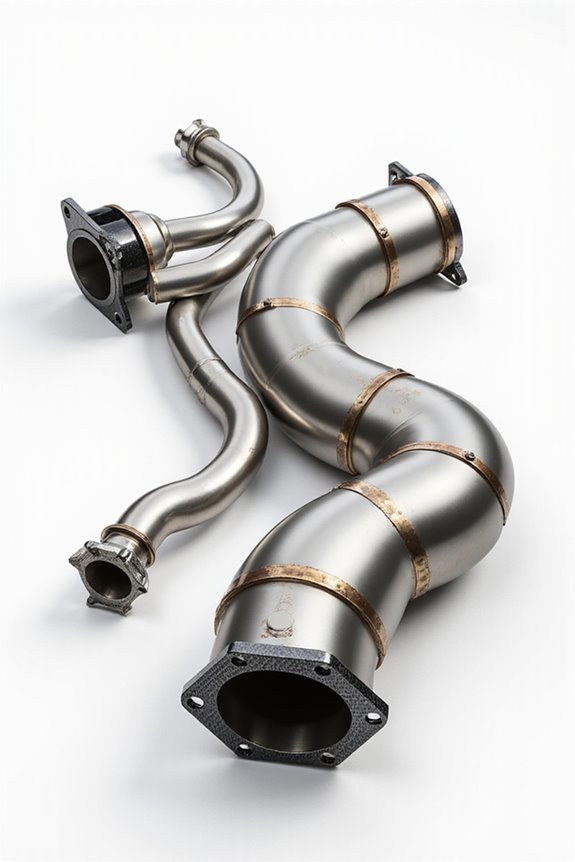Calibrating wind indicators on your yacht isn’t as tricky as it sounds, promise! First, we pick calm waters with steady wind to avoid confusing the sensors. Then, we double-check our compass by spinning in circles to spot any magnetic oddities and verify our headings are true. We compare readings on both tacks to catch any shifts, tweaking the True Wind Angle and speed accordingly. Plus, we keep an eye on sensor health—no one likes a flaky instrument! Interested? There’s more to master to keep your instruments shipshape.
Key Takeaways
- Choose calm, flat waters with light to moderate winds for precise and reliable wind indicator calibration on your yacht.
- Regularly calibrate your compass by steering steady circles and record deviations to ensure accurate heading data.
- Compare wind angle readings on different tacks to detect errors and apply correction factors for true wind angle accuracy.
- Adjust wind speed measurements by combining boat speed, apparent wind speed, and GPS data to create precise calibration curves.
- Inspect sensors and wiring regularly, replacing damaged components and performing recalibrations after equipment changes to maintain accuracy.
Preparing the Ideal Calibration Environment
Calibrating your yacht’s wind indicators isn’t just about fiddling with gadgets; it’s about setting the stage right, and that stage is the environment you choose. We all know how tricky ocean conditions can be, so picking the right weather conditions—light to moderate winds around 4 to 5 Beaufort and a calm sea—really helps nail accurate readings. Ever tried calibrating in gusty winds? It’s like chasing a cat on deck! Also, the calibration location matters a ton. We want flat, non-tidal waters free from obstacles that mess with airflow around the masthead sensor. Have you found a quiet cove where you can tack head-to-wind easily? That’s golden. With these thoughtful choices, we’re setting ourselves up for precise, reliable wind data—no guesswork, just smooth sailing ahead.
Ensuring Accurate Compass and Heading Data
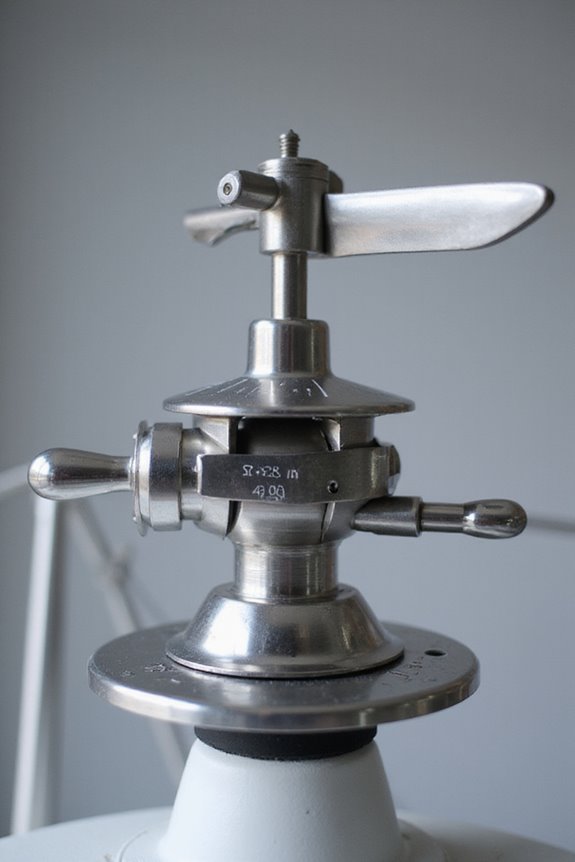
While we often focus on wind instruments when fine-tuning our yacht’s navigation, nailing down accurate compass and heading data is just as essential—and sometimes trickier than you’d expect. Magnetic interference from our yacht’s metal parts or electronics can throw off compass alignment, misleading us on the water. So, how do we fix this? Regular heading calibration is key. By steering a steady circle at around 2-3 degrees per second in calm waters, away from pesky magnetic objects, we can record deviations at various headings. Creating a deviation table helps us correct compass errors beyond basic points, giving us true confidence in bearings. We’ll also want to use the sun as a natural reference—it’s like a trusty old friend guiding us toward reliable compass accuracy.
Understanding True Wind Angle Calibration
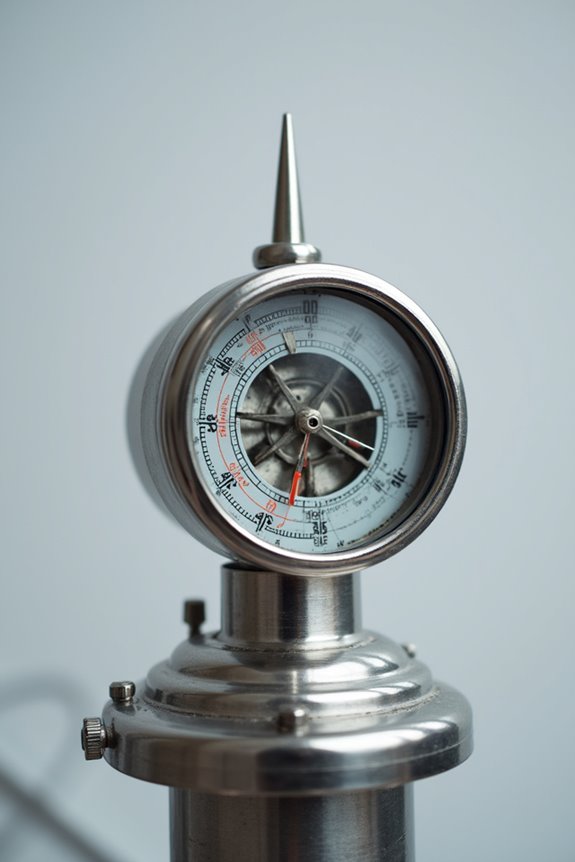
One key step in perfecting our yacht’s wind instruments is getting the True Wind Angle (TWA) calibration just right. Understanding TWA principles helps us detect errors by comparing true wind direction across tacks using our compass heading. If the readings shift when we tack, we realize there’s a calibration issue — basically, true wind is playing tricks on us thanks to aerodynamics like mast and sail airflow. That’s why calibration importance can’t be overstated: correcting this keeps our readings consistent, no matter how we steer. It’s a bit like tuning a musical instrument; without it, everything sounds off. So, by applying smart correction factors and testing wisely, we guarantee our TWA stays true, helping us sail smarter and with confidence every time we hit the water.
Correcting True Wind Speed Measurements
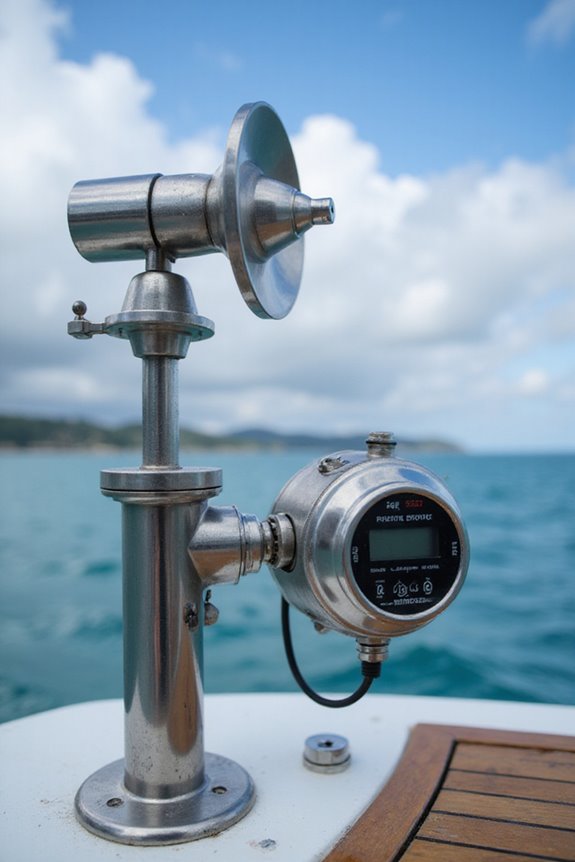
Now that we’ve nailed down how to keep our True Wind Angle steady, it’s time to tackle True Wind Speed — the other half of the wind equation. Correcting true wind speed requires careful calibration methods, combining boat speed and apparent wind speed through vector calculations. Ever wonder why your instruments don’t always match reality? It’s often because boat speed measurements need tweaking, especially accounting for currents using GPS speed over ground in calm conditions. By gathering data from multiple runs at different speeds, we perform wind speed analysis to create a calibration curve, scaling apparent wind readings accurately. This process helps us factor out errors and guarantees our wind instruments give us reliable data — because, hey, sailing is challenging enough without questionable wind speeds!
Addressing Local Aerodynamic Effects and Instrument Offsets
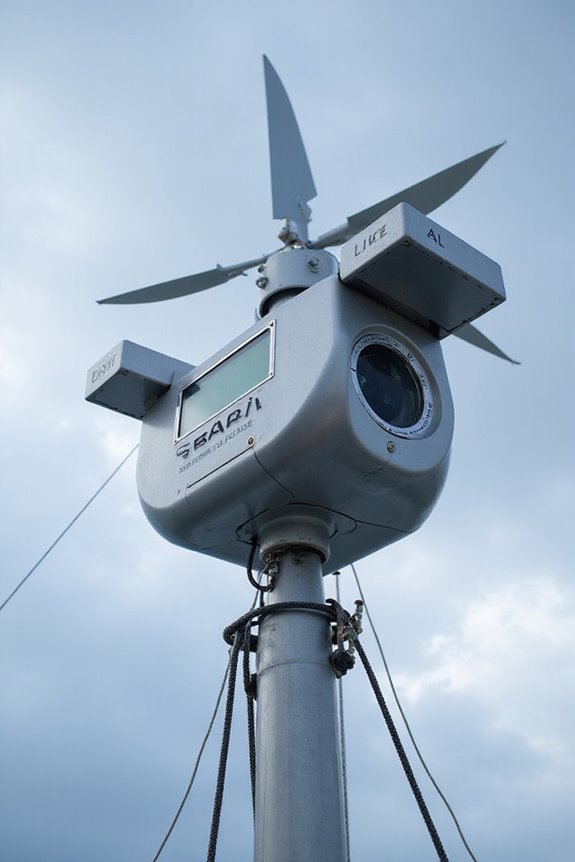
Because the wind isn’t always as straightforward as it seems, we need to pay close attention to how local aerodynamic effects and instrument offsets can mess with our wind readings. Ever notice your wind angle shifts oddly when tacking? That’s often aerodynamic interference—the mast’s upwash or wind shear twisting the wind profile along the mast. Turbulence from rigging makes things jumpy near the anemometer too. Plus, if our wind sensor isn’t perfectly aligned, we get instrument offsets that skew true wind readings. So, how do we fix this? By carefully comparing wind data on different tacks and points of sail, looking for consistent differences, and adjusting calibration accordingly. It’s kind of like tuning your ears to the symphony of sea and sail—getting everything in harmony makes sailing smoother.
Performing Calibration Maneuvers on the Water
Although the idea of calibrating wind instruments might sound like a chore, it’s actually an essential step we can’t skip if we want our readings to be trustworthy. Picking calm winds and an open stretch of water sets the stage for accurate wind measurement. We sail steady circles and tack close-hauled on both sides, keeping boat speed moderate and heel low—no wild rides here! By maintaining identical jib settings and steady boat handling, we isolate true wind data from water’s tricks. Measuring apparent wind angles on each tack helps us spot any sensor misalignment. Sure, it takes some practice, but these sailing techniques are well worth it when your instruments finally tell the real story out there—no guessing, just reliable info every time. Ready to give it a try?
Utilizing Calibration Matrices and Correction Tables
After we’ve put in the time sailing steady circles and tacking carefully to nail down those wind readings, it’s time to make sense of all the numbers we collected. This is where matrix adjustments and correction factors come in handy. Think of the calibration matrix as our trusty cheat sheet—it helps fix errors depending on our points of sail, adjusting for wind speed, direction, and those tricky aerodynamic effects around the mast. Correction tables, meanwhile, let us fine-tune these fixes across different wind conditions, making our instrument readings as close to reality as possible. Modern software usually handles these calculations, but understanding how to build and update these tables feels like owning the keys to precise wind data. Who knew tweaking numbers could feel this satisfying?
Troubleshooting Wind Instrument Issues
When your wind instrument suddenly stops giving reliable info, it can feel like your trusty yacht just went silent on you — frustrating, right? Let’s not panic. First, a quick sensor inspection often reveals damage or corrosion that’s throwing off readings. We also need to keep up with wiring maintenance; loose, corroded connections or moisture in masthead connectors love to cause static or dropouts. Grab a multimeter and check voltage on cables—wriggle connectors to catch if wires are acting up. If the sensor looks battered, replacing it saves headaches. Remember, good grounding and avoiding cable kinks help keep signals clean. Troubleshooting isn’t just about fixing; it’s bonding with our yacht’s quirks. Next time, these steps will make any wind instrument hiccup far less mysterious—and we’ll be back on course together.
Maintaining Calibration After Equipment Changes
Whenever we swap out wind sensors or upgrade our instruments, it’s essential to double-check that everything’s still lined up just right—otherwise, we might be chasing phantom winds or getting skewed speed readings. After any change, we run baseline calibrations on calm days, checking for sensor drift that can sneak in thanks to vibration or mounting tweaks. How often should we recalibrate? Recalibration frequency depends on usage, but scheduling it regularly keeps our data trustworthy. We also look out for rig or hull changes that mess with airflow around the sensors—these subtle shifts can throw off accuracy if ignored. Keeping detailed logs and using onboard calibration tools helps us maintain a steady grip on true wind angles and speeds, so our readings stay sharp no matter what gear we fit next.
Frequently Asked Questions
How Often Should I Replace My Wind Sensor for Optimal Accuracy?
It is understood that wind sensor longevity varies, but usually, sensor replacement frequency falls between 3 to 5 years to keep accuracy sharp. Together, let’s stay proactive in maintaining our gear for the best sailing experience.
Can Calibration Be Done Effectively Indoors Using Simulation Tools?
We can improve indoor calibration with simulation accuracy to check sensor basics, but won’t get all real sailing conditions. Joining together our efforts, we’ll guarantee true calibration happens on the water for best results.
What Smartphone Apps Help Monitor Wind Indicator Calibration Status?
We recommend smartphone applications like SailTimer, OpenCPN, and Sail Expert for wind monitoring. These apps help us track calibration status live, supporting true and apparent wind data to keep our sailing experience connected and precise.
How Do Temperature Changes Affect Wind Instrument Calibration?
It is understood temperature effects cause material expansion and sensor drift, which reduce sensor accuracy. Together, we must monitor temperature changes closely, adjusting calibrations regularly to keep our wind instruments reliable and precise in all conditions.
Is Professional Calibration Service Necessary for DIY Sailors?
We all know DIY calibration feels like sailing in familiar waters, but professional calibration is the lighthouse guiding us through complex wind shifts. Though DIY works, professional calibration guarantees accuracy we need, making us stronger sailors together.

